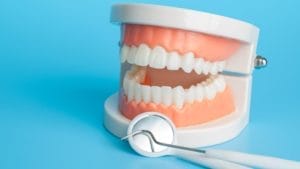Fluoroquinolone Toxicity – have you been floxed?

Fluoroquinolone Toxicity – have you been floxed?
- What are fluoroquinolones?
- How do you know if you’ve been floxed and what is fluoroquinolone toxicity?
- What actually causes these issues?
- What to avoid
Quinolone antibiotics were first developed in the 1960s to work against a broad range of bacterial infections.
Unfortunately, like most medications, there are a host of unwanted side effects and for a small amount of the population, fluroquinolone toxicity can have devastating effects. These may include symptoms of extreme fatigue, tendon rupture, joint and muscle pains, nerve pains and nervous system disturbances.
Many scientists say it provides a compelling argument that antibiotics don’t just harm microbes — they can severely damage human cells, too. (1)
So, what exactly is it all about and how do you know if you’ve been floxed?
What are fluoroquinolones?
Nearly all quinolone antibiotics in use are fluoroquinolones, which contain a fluorine atom in their chemical structure and are effective against both Gram-negative and Gram-positive bacteria.
Fluoroquinolones “kill bacteria by blocking enzymes which normally untangle DNA during cell replication. Usually, these enzymes cut DNA’s double helix, pass another part of the strand through the gap, and then mend the cut.
But quinolones bind to the enzymes, preventing them from mending their cuts. In the 1980s, researchers added fluorine atoms to the quinolones’ structures. This allowed the antibiotics to penetrate tissues throughout the body, including the central nervous system, and boosted their effectiveness against a broad range of bacterial infections.” (2)
Fluoroquinolones are of value in certain infections, including some life-threatening ones, where alternative antibiotics are not sufficiently effective.
But fluoroquinolones, as with many antibiotics, have been overused. Serious side effects have been associated with them over the years, and numerous cautions from the FDA limit their use. A number of label changes have been mandated, and some fluoroquinolones even have black box warnings. (3)
Which antibiotics are fluoroquinolones?
These medicines include ciprofloxacin (Cipro), gemifloxacin (Factive), levofloxacin (Levaquin), moxifloxacin (Avelox), norfloxacin (Noroxin), and ofloxacin (Floxin).
How do you know if you’ve been floxed and what is fluoroquinolone toxicity?
It’s become increasingly clear that this class of drugs can have some very unwelcome effects in some patients. The most prominent of these is tendon damage, which often showing up as problems with the Achilles tendon, up to outright rupture even months after drug treatment. (4)
It can sometimes be difficult to diagnose fluoroquinolone toxicity as symptoms can appear long after the FQs are taken or only after multiple rounds of FQs. Symptoms may also resolve after stopping the FQs, persist for years, or come and go as time goes by.
Fluoroquinolone medicines (which contain ciprofloxacin, levofloxacin, lomefloxacin, moxifloxacin, norfloxacin, ofloxacin, pefloxacin, prulifloxacin and rufloxacin) can cause long-lasting, disabling and potentially permanent side effects involving tendons, muscles, joints and the nervous system.
These serious side effects include inflamed or torn tendon, muscle pain or weakness, and joint pain or swelling, walking difficulty, feeling pins and needles, burning pain, tiredness, depression, problems with memory, sleeping, vision and hearing, and altered taste and smell.
Tendon swelling and injury may occur within two days of starting treatment with a fluoroquinolone but may even occur several months after stopping treatment. (5)
FQs can cause:
- Tendon rupture
- Nervous system disturbances
- Heart, kidney and liver damage
- Diabetes
- FQ Associated Disability (FQAD)
What actually causes these issues?
The most serious reactions caused by this class of medication include toxicities of the central nervous system, cardiovascular system and the musculoskeletal system. (6)
This toxicity can be caused by the following:
- Oxidative stress
One of the main effects generated by FQs in cells is connected with the oxidative stress (OS). This “involves the overdosed leakage of electrons from the electron transport chain (ETC). In the normal, healthy state, the Krebs cycle (KC) supplies hydrogen from glyco- and lipolysis in the form of NADH2 and FADH2 from KC to ETC. ETC separates hydrogen into protons and electrons. Protons are transported into mitochondrial intermembrane space (IMS) generating proton gradient, and mitochondrial membrane potential ΔΨm across the inner membrane and electrons is transported into oxygen. This complex process is a masterwork of the evolution because 4 electrons must enter the oxygen simultaneously in order to produce 2 water molecules. In the case of the block in the electron transport and the oxygen not to be fully reduced in one step, the reactive oxygen species (ROS) are created, which might be able to generate OS.”
- Binding of metals (magnesium, calcium, zinc, copper, manganese, iron and selenium)
- Damage to mitochondria
- Disruption of cellular energy pathways
- Damage to DNA
Fluoroquinolones and gut health
Antibiotics work by blocking bacterial processes. They either kill the bacteria or stop them from multiplying. Unfortunately, antibiotics cannot tell the difference between the “bad” bacteria causing an infection and the “good” bacteria that belong in your gut. It’s the beginning of a bad relationship between antibiotics and gut health.
Antibiotics are like a blanket smothering both good and bad bacteria. They disrupt your gut’s delicate ecosystem, creating a state of imbalance. As the number of good bacteria in your gut decreases, you become susceptible to overgrowths of other organisms, including a yeast (or fungus) called Candida and many other potential bacterial overgrowths. (8)
At Advanced Functional Medicine, we can help you restore your gut health by restoring the good bacteria in your gut, repair your gut lining, re-inoculating your gut with healthy bacteria and removing bacterial overgrowth.
Antibiotics and gut health are also related to liver health. Antibiotics can be taxing on the liver, so it’s beneficial to include supplements that support the detoxification process. Supplements with milk thistle, alpha-lipoic acid, glutathione and N-Acetyl Cysteine help detox and optimize liver function. (9)
How to treat fluoroquinolone toxicity
First thing you’ll need to do is stop taking the medication, then there are a number of steps you can take to return your body to optimal health.
- Eat clean, including meats without antibiotics
- Learn and follow advice on what to avoid
- Take supplements (listed below)
- Get enough deep sleep
- Reduce stress
- Stay hydrated, avoid fluoridated water
- Get emotional support – your state of mind is very important
- Get help from knowledgeable health practitioners
- Document everything you’ve tried so you can track what’s
worked and what hasn’t
What to avoid
- Exercise – keep it mild and measured
- Steroids; inhalers, nasal sprays, cream, oral
- Vinegar
- NSAIDS (Anti-inflammatories, Advil, Motrin, Aleve, Ibuprofen)
- Anti-depressants
- Gadolinium Contrast in Imaging
- Steroid injections
- Neck cracking chiropractic manoeuvres
- Fluoride toothpaste (10)
At Advanced Functional Medicine, our health practitioners will treat fluoroquinolone toxicity with a combination of nutrients and antioxidants, as well as supplements to:
- Replace minerals in the body
- Repair the mitochondria
- Restore cellular energy
- Restore gut health
- Balance the patients biochemistry
Some of the supplements we prescribe for fluoroquinolone toxicity include:
- Glutathione
- Curcumin
- Methylation nutrients such as folate, B6 and B12
- Electrolytes
- Amino acids
- Specific herbs
We will also tailor a 100% whole food diet, avoiding all antibiotics, hormones, pesticides and herbicides. A ketogenic diet, ideal for detoxifying the body, is a very low carb, high fat diet that shares many similarities with the Atkins and low carb diets. It involves drastically reducing carbohydrate intake and replacing it with fat. This reduction in carbs puts your body into a metabolic state called ketosis. Other patients may fare batter on a Paleo type diet. Grains and dairy cause common aggravations for patients.
What you can eat on the ketogenic diet
You should base the majority of your meals around these foods:
- meat: red meat, steak, ham, sausage, bacon, chicken, and turkey
- fatty fish: salmon, trout, tuna, and mackerel
- eggs: pastured or omega-3 whole eggs
- butter and cream: grass-fed butter and heavy cream
- cheese: unprocessed cheeses like cheddar, goat, cream, blue, or mozzarella
- nuts and seeds: almonds, walnuts, flaxseeds, pumpkin seeds, chia seeds, etc.
- healthy oils: extra virgin olive oil, coconut oil, and avocado oil
- avocados: whole avocados or freshly made guacamole
- low carb veggies: green veggies, tomatoes, onions, peppers, etc.
- condiments: salt, pepper, herbs, and spices
What to avoid on the ketogenic diet
- sugary foods: soda, fruit juice, smoothies, cake, ice cream, candy, etc.
- grains or starches: wheat-based products, rice, pasta, cereal, etc.
- fruit: all fruit, except small portions of berries like strawberries
- beans or legumes: peas, kidney beans, lentils, chickpeas, etc.
- root vegetables and tubers: potatoes, sweet potatoes, carrots, parsnips, etc.
- low fat or diet products: low fat mayonnaise, salad dressings, and condiments
- some condiments or sauces: barbecue sauce, honey mustard, teriyaki sauce, ketchup, etc.
- unhealthy fats: processed vegetable oils, mayonnaise, etc.
- alcohol: beer, wine, liquor, mixed drinks
- sugar-free diet foods: sugar-free candies, syrups, puddings, sweeteners, desserts, etc.
Following a ketogenic diet can be very beneficial for many patients who are experiencing fluoroquinolone toxicity.
How we can help
When it comes to fluoroquinolone toxicity, it is important to get help and support. Although there isn’t a cure, taking steps to restore health can have a positive impact on the quality of your life. Improving measurably from fluoroquinolone toxicity can take at least six months or longer and being vigilant about your diet, lifestyle and taking the right supplements can help you to avoid triggering symptoms.
A whole body approach is required to heal from fluoroquinolone toxicity through balancing biochemistry, removing viral and parasitic loads, optimising gut health and ensuring diet and lifestyle practices are in check.
If you’d like to find out more about our approach for fluoroquinolone toxicity, get in touch via the form below.




